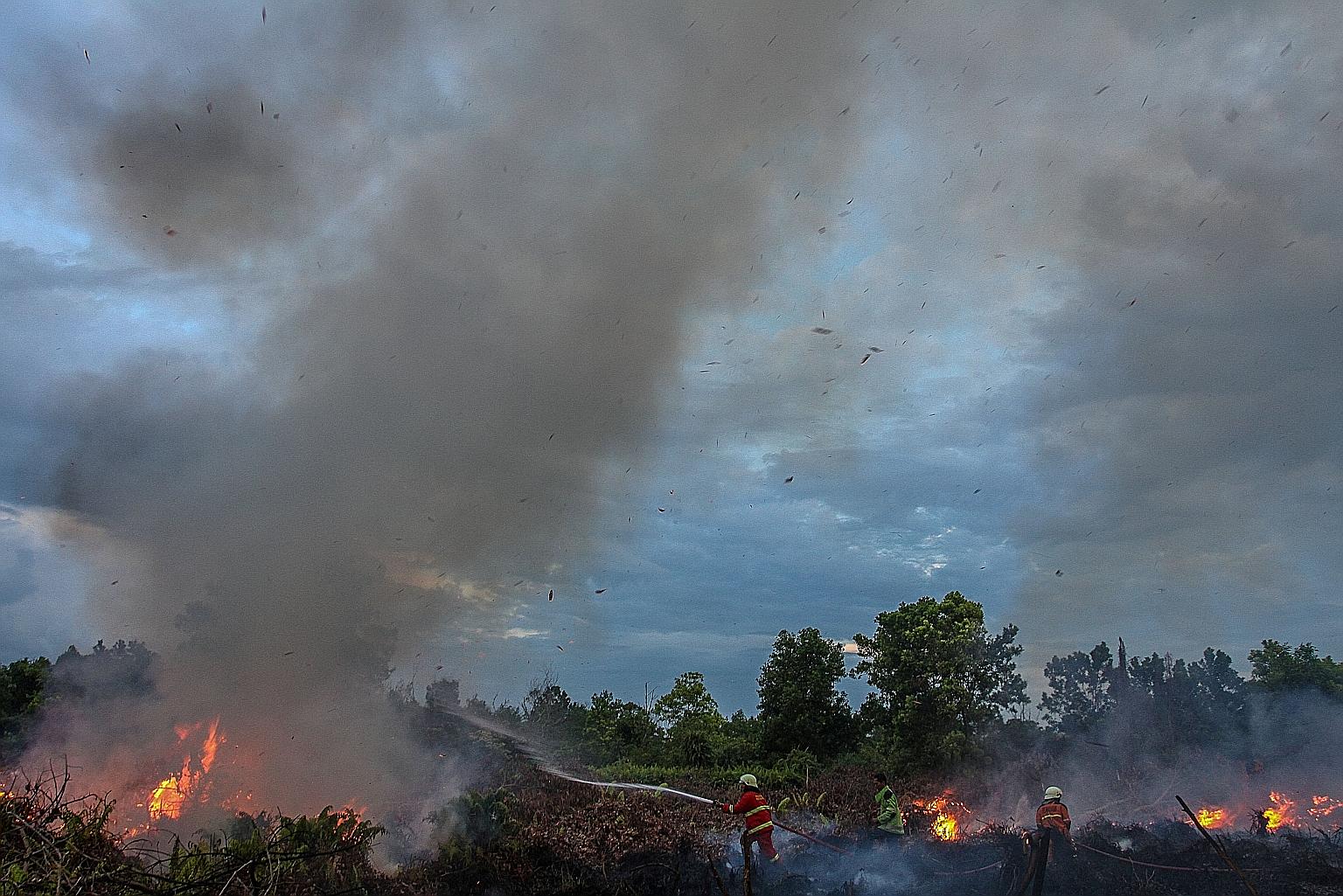Singapore set for third straight haze-free year
Indonesian minister says there won't be a repeat of 2015 crisis in 2018, thanks to steps taken
Sign up now: Get ST's newsletters delivered to your inbox

Firefighters putting out bush fires in Pekanbaru, Riau province, on Monday. Since the 2015 haze crisis, Indonesia has taken significant steps to reduce forest fires.
PHOTO: REUTERS
Luke Anthony Tan, Audrey Tan
Follow topic:
Singapore looks set to see a third straight year with no haze, due in part to Indonesia's sustained efforts at curbing fires and preventing their spread.
Indonesia's Minister of National Development Planning Bambang Brodjonegoro said yesterday that the 2015 haze crisis would not repeat itself this year.
"In the last few years, including this year, we did not have the haze that happened in 2015," he said, adding that forestry and peatland management plans have already been implemented. Dr Bambang was speaking at the fifth Singapore Dialogue on Sustainable World Resources held at the Grand Hyatt Singapore hotel. The event was organised by think-tank Singapore Institute of International Affairs.
His statement echoes similar promises made by other Indonesian officials last year and in 2016.
The haze in Singapore is largely caused by winds blowing smoke from forest fires in Indonesia. Many of Indonesia's pulpwood and oil palm plantations are located on carbon-rich peatlands. When these areas are drained of water for planting, the risk of fire increases.
In 2015, Indonesia's dry season coincided with the El Nino weather phenomenon, which is linked to warmer and drier weather in this part of the world.
The bad weather exacerbated the forest fires typical of the country's agro-forestry landscape, and caused the region to suffer the worst haze crisis on record.
Since then, Indonesia has taken significant steps to reduce the occurrence of fires, said Dr Nirarta Samadhi, country director of research organisation World Resources Institute Indonesia.
Speaking to the media on the sidelines of yesterday's event, Dr Samadhi pointed to three ways that the Indonesian government has demonstrated its commitment to dealing with the haze issue.
The first was the formation in 2016 of the Peatland Restoration Agency, which was tasked with carrying out programmes to restore Indonesia's carbon-rich peatlands.
To this end, new regulations were rolled out, such as a land swop scheme aiming to get companies off deep peatlands and to move to mineral soils instead, said Dr Samadhi.
The Indonesian government also conducted mapping exercises using Lidar technology to provide data on water levels. If water table levels are too low, peatlands could become more flammable.
Dr Samadhi said these government initiatives have contributed to the clear skies in the region in the past three years.
But other factors not within direct control, such as the weather, played a role too. "Recently, we have also had the advantage of having wetter weather," Dr Samadhi said.
Sub-national elections in Indonesia could also have contributed to the haze-free skies, as local politicians would have greater incentive to prevent fires, Dr Samadhi said.
Given the role that unpredictable factors play in contributing to the haze, he added, it is hard to predict if South-east Asia could achieve its target of being haze-free by 2020. The target was set by Asean environment ministers after the 2015 crisis.
Ms Zhang Wen, executive director of volunteer group People's Movement to Stop Haze (PM.Haze), said that for Asean to reach its 2020 target, financial institutions need to play their part.
"We hope local and regional banks can develop clear policies on not financing companies linked to unsustainable practices, such as slash-and-burn techniques, deforestation, and peat drainage. They should also develop clear timelines to help their clients to improve their practices, by adhering to standards set out in eco-certification schemes," she said.

